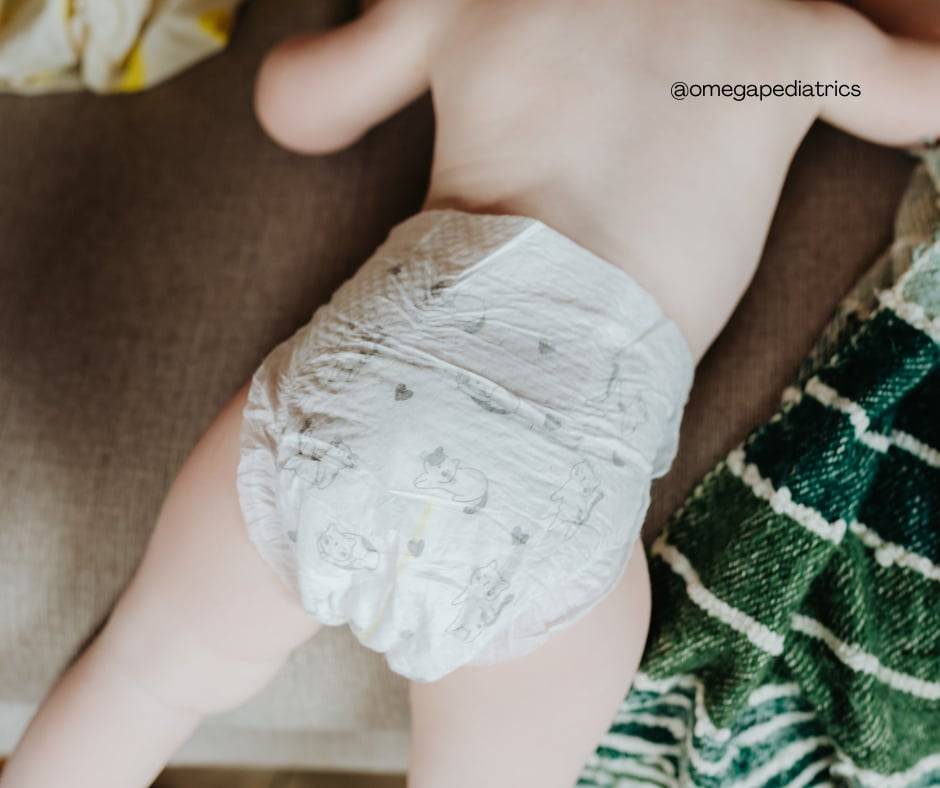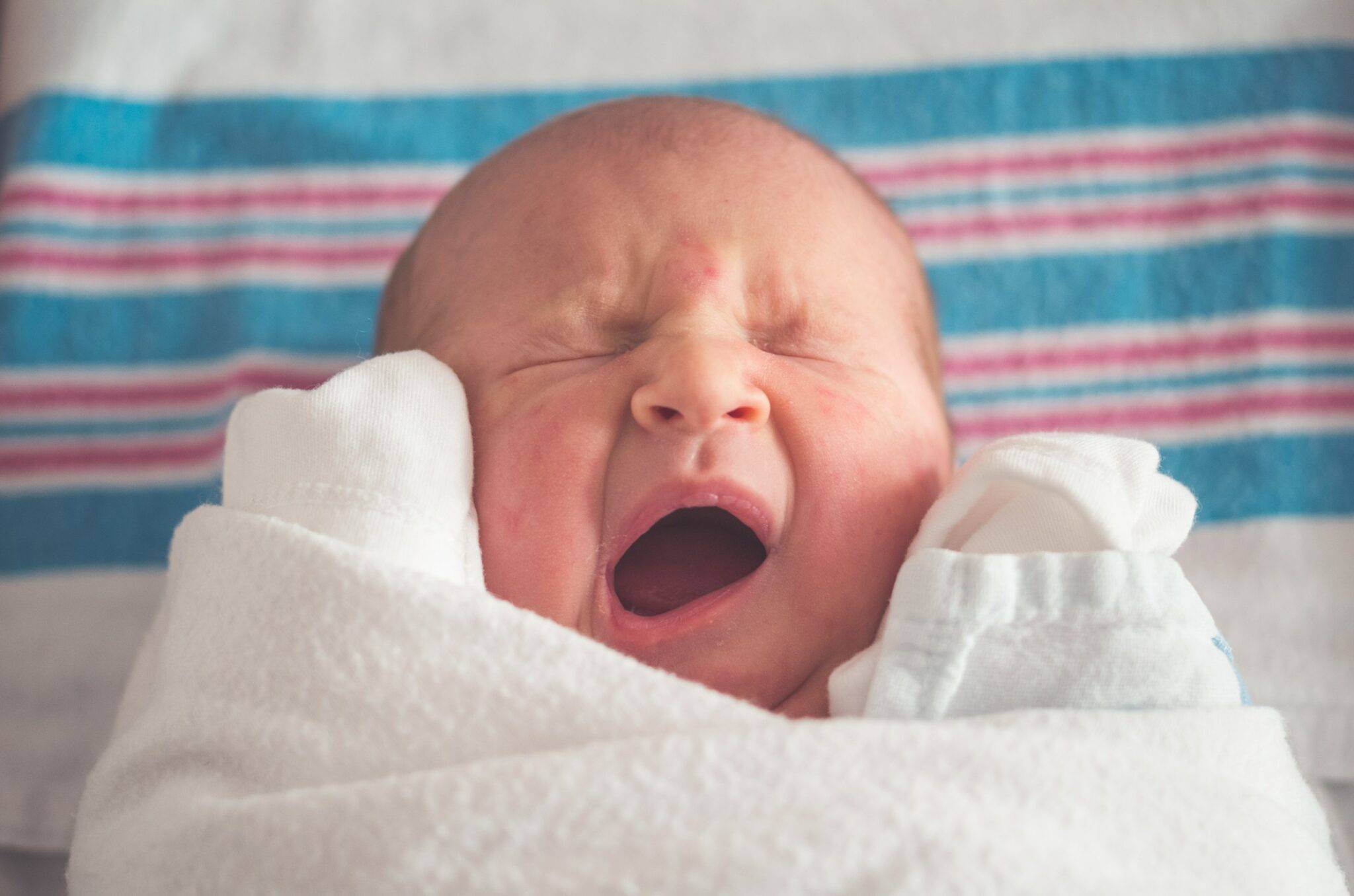When you welcome a newborn into your family, one of the most magical moments is seeing them open their eyes and look at the world around them for the first time. However, many parents wonder how newborn babies see and how their vision develops.
This blog post will dive into the fascinating world of newborn vision development, offering insights and tips to help you understand what your baby can see and how their vision will evolve in the first year of life.
The Basics of Newborn Vision: How Newborn Babies See
When your baby is born, their eyes adjust to the outside world. How newborn babies see is quite different from how adults perceive their surroundings. At birth, a newborn’s vision is blurry, and they only focus on objects 8-10 inches away from their face, a perfect range for focusing on a parent’s face during feeding or cuddling.
Newborn Visual Acuity
Visual acuity refers to the clarity or sharpness of vision. Newborns have a visual acuity of about 20/400, which means they see best when objects are very close. Over the first few months, their visual acuity will gradually improve as their eyes and brain develop and learn to work together.
Sensitivity to Light
Newborns are also sensitive to bright light. This is why they tend to squint or close their eyes when exposed to sunlight or strong indoor lighting. Their pupils are smaller and don’t dilate well yet, which limits the amount of light entering their eyes. This sensitivity decreases as they grow, and their eyes get used to different lighting conditions.
Developmental Milestones in Newborn Vision
Understanding the key milestones in your baby’s vision development helps you track their progress and know when to expect changes. Each baby is unique and reaches these milestones at slightly different times, but here are some general guidelines to help you learn what to expect.

0-1 Month: Adjusting to Light: During the first month, babies learn to adjust to light and begin to recognize faces, especially those of their parents. They’re most comfortable looking at high-contrast patterns, such as black-and-white designs. At this stage, they start to make eye contact, which is an early sign of their developing vision.
2-3 Months: Following Moving Objects: By the second month, babies start to track moving objects with their eyes. This means they follow you with their gaze as you move around the room. They may also reach for objects, indicating their hand-eye coordination is developing.
This is a significant milestone since it indicates that their visual system is beginning to coordinate with their motor skills.
4-6 Months: Improved Focus and Color Vision: Between 4-6 months, your baby’s vision will significantly improve. They will begin to see more clearly at greater distances and develop color vision. Reds and greens are the first colors they distinguish, followed by blues and yellows.
This period also marks the beginning of depth perception, allowing them to judge distances.
Advanced Vision Development in the First Year
As your baby grows, their vision will continue to develop and refine. Understanding the changes during the first year helps you support and nurture this critical aspect of their growth.
6-9 Months: Depth Perception and Eye Coordination: Your baby’s depth perception and eye coordination will improve significantly by six months. They will reach for objects with greater accuracy and may begin to crawl toward interesting items.
9-12 Months: Fine-Tuning Visual Skills: Your baby’s visual skills will be fine-tuned by 9-12 months. They will recognize familiar people and objects from a distance and enjoy exploring their environment with more confidence.
How Vision Development Affects Learning and Growth
Vision development is not just about seeing clearly; it’s also about how well your baby can learn and interact with their surroundings. Good vision is crucial for social interaction, emotional bonding, and overall cognitive development.
- Social Interaction and Bonding: Your baby’s ability to see and recognize faces is vital for social interaction and bonding. When they look into your eyes and see your facial expressions, it can help them understand emotions and develop a sense of security.
- Cognitive Development: Your baby’s vision plays a key role in learning and exploring as they grow. Reaching for toys, crawling toward objects, and eventually walking are all activities that depend on good vision. Encouraging activities that promote visual development also enhance cognitive skills.
The Role of Parents in Vision Development
As a parent, you play a crucial role in your baby’s vision development. Help ensure they reach their full visual potential.
- Creating a Visually Stimulating Environment: Fill your baby’s environment with colorful and engaging stuff. Use toys, books, and decorations with high-contrast colors and patterns to catch their interest and encourage visual exploration. Mobiles, rattles, and soft books are excellent choices for visual stimulation.
- Encourage Face-to-Face Interaction: Spending time face-to-face with your baby strengthens your bond and helps them practice focusing on your face. Talk to them, smile, and make facial expressions to engage their visual interest.
- Safe Light Exposure: Ensure your baby gets exposed to natural light during the day, but be cautious about direct sunlight. Soft, natural lighting is beneficial for their developing eyes.
- Monitoring Development: Keep track of your baby’s vision milestones and observe their reactions to visual stimuli. If you notice anything unusual or concerning, seek professional advice.
Activities to Encourage Visual Exploration
Providing activities helps your baby explore and develop their vision. Here are some suggestions:
- Tummy Time: Tummy time is great for strengthening your baby’s muscles and vision. When on their tummy, babies lift their heads and look around, helping improve their focus and eye coordination.
- Reading Together: Reading to your baby from an early age enhances their vision and cognitive development. Choose books with colorful pictures and simple patterns to engage their interest.
- Exploring Outdoors: Taking your baby for walks outside exposes them to sights and experiences. Point out different objects, such as trees, cars, and animals, to help them learn to focus and recognize various items.
Tips for Enhancing Your Baby’s Vision
Parents encourage their baby’s vision development. Here are some practical tips:
- Play Peek-a-Boo: Peek-a-boo is a simple yet effective game that develops visual skills. It teaches object permanence (understanding that objects still exist even when they can’t be seen) and helps focus and track movements.
- Use Toys That Make Sounds: Toys that make sounds connect visual and auditory experiences. Shaking a rattle or squeezing a squeaky toy makes their head turn and focus on the source of the sound.
- Introduce Safe Mirrors: Babies love looking at faces, and mirrors are excellent ways to observe their reflection. A baby-safe mirror is a great tool for encouraging visual exploration and self-recognition.
Vision and Overall Health: Why Early Detection Matters
Early detection of vision problems is crucial because it allows for timely intervention, preventing long-term issues and supporting healthy development. Vision problems can sometimes indicate other health issues, so addressing them early is essential.
Impact on Development: Untreated vision problems can affect aspects of your baby’s development, including motor skills, learning abilities, and social interactions. Early detection and treatment help ensure your baby develops these skills appropriately.
Importance of Regular Check-Ups: Regular pediatric check-ups are vital for monitoring your baby’s overall health, which includes their vision. These visits provide an opportunity to catch any issues early and take steps to address them.
How Vision Screenings Are Conducted for Newborns
Vision screenings are a standard part of newborn care. These screenings help identify any potential issues early on, ensuring prompt treatment and support if needed.
Initial Newborn Screening
While in the hospital, a pediatrician or nurse performs an initial vision screening to check for immediate concerns. This screening includes checking the red reflex, which helps identify cataracts or other eye issues.
Follow-Up Screenings
Your baby’s vision will be monitored during regular pediatric visits. These follow-up screenings involve checking for proper eye alignment, tracking ability, and signs of visual impairment. If concerns arise, further testing by an eye specialist may be recommended.
Addressing Parental Concerns About Vision
It’s normal for parents to worry about their baby’s vision, especially if there are signs of potential issues. Understanding common concerns and knowing when to seek help can provide peace of mind.
- Recognizing Strabismus: Strabismus, or crossed eyes, is a condition where the eyes don’t align properly. It’s not uncommon in newborns, but if it persists beyond four months, it should be evaluated by a specialist.
- Dealing with Amblyopia: Amblyopia, or lazy eye, occurs when one eye doesn’t develop proper vision. Early treatment, such as patching the stronger eye, helps strengthen the weaker eye and prevent long-term vision problems.
The Role of Genetics in Vision Development
Genetics plays a significant role in your baby’s vision development. If there’s a family history of vision problems, be vigilant and proactive in monitoring your baby’s eye health. Genetic conditions affect vision, such as congenital cataracts or inherited retinal diseases.
If there’s a known genetic condition in your family, inform your pediatrician so they can monitor your baby closely. While you can’t change your baby’s genetic makeup, early detection, and intervention help manage and treat vision issues. Regular check-ups and screenings are vital in this process.
Common Concerns and When to Seek Help
It’s natural for parents to have concerns about their baby’s vision. Here are some common worries and signs that you should consult a pediatrician or an eye specialist.
Signs of Vision Problems
While most babies develop their vision without issues, certain signs indicate a problem. These include:
- Persistent eye turning (strabismus) beyond 4 months
- Inability to track moving objects
- Excessive tearing or discharge
- Sensitivity to light
Routine Eye Examinations
Your pediatrician will check your baby’s eyes during regular check-ups. They may refer you to a pediatric ophthalmologist for a more detailed examination if there are concerns.
When to Consult a Specialist
While most vision concerns are addressed during routine pediatric visits, there are instances when consulting a specialist becomes necessary. Here are some indicators that it might be time to see a pediatric ophthalmologist:
- Persistent Eye Turn: If your baby’s eyes don’t align properly and persist beyond four months, it’s essential to consult a specialist to determine the cause and appropriate treatment.
- Delayed Vision Milestones: If your baby isn’t meeting vision milestones, such as tracking objects or recognizing faces, discussing these concerns with your pediatrician and potentially seeing a specialist is important.
FAQs About Newborn Vision
Can Newborns Recognize Their Parents?
Yes, newborns recognize their parents’ faces, especially their mothers. This recognition is primarily based on the close distance (8-10 inches) they can see clearly.
How Can I Tell If My Baby Is Seeing Properly?
Watching for developmental milestones is key. By three months, your baby should be able to follow moving objects and show interest in bright, colorful toys. If you have concerns, consult your pediatrician.
When Should My Baby Have Their First Eye Exam?
Your baby’s first eye exam occurs during their newborn check-up. The pediatrician will continue to monitor their vision at each well-child visit. If there are any concerns, they may refer you to a specialist.
Nurture Precious Moments as Your Newborn Learns to See the World
Understanding how newborn babies see and track their vision development is essential to parenting. Knowing what to expect and how to support their visual growth helps them develop the skills to explore and interact with the world around them. Every baby is unique and may reach milestones at their own pace.
For concerns about your baby’s vision, you may consult your pediatrician for guidance and support. For more detailed information on newborn care, check out these helpful articles on Omega Pediatrics:
- How Long Can a Baby Safely Use a Bassinet? 6 Essential Factors to Consider
- How Often Should You Take Your Newborn to the Pediatrician in the First Year?
These resources provide additional insights into your baby’s development and well-being. By staying informed and proactive, you ensure your baby’s vision and overall development are on the right track. Enjoy these precious early moments as your baby learns to see the world around them!






